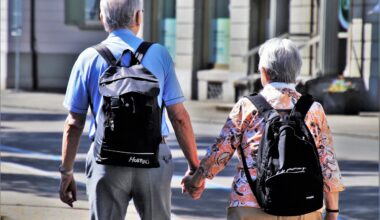Importance of Transporting Rescued Dogs
Transporting rescued dogs is a crucial part of animal rescue operations. It involves transferring dogs from high-risk environments, such as overcrowded shelters or abusive situations, to safe locations, including foster homes or permanent adopters. The process is emotionally significant, as it not only saves lives but also offers the dogs a chance for rehabilitation and a better future. In addition to saving dogs, this process aids shelters by freeing up space for new rescues. However, for effective transport, specific protocols must be in place and followed diligently. One of the most critical aspects is sanitizing transport equipment thoroughly to prevent the spread of diseases among rescued canines. Transport equipment, which may include crates, leashes, and harnesses, should be cleaned to eliminate any pathogens or contaminants before each mission. Adhering to this practice minimizes health risks and ensures that the rescued animals travel in a safe and clean environment. Dedicated volunteers and rescue teams often conduct the cleaning process, ensuring that everything is in order for every trip. A conscientious approach to sanitization fosters trust and safety during transport, which is paramount in dog rescue missions.
Effective Cleaning Solutions and Methods
When it comes to sanitizing transport equipment, selecting the right cleaning solutions and methods is essential. Many dog rescues prefer using pet-safe and environmentally friendly products. Natural remedies like vinegar, baking soda, and hydrogen peroxide have been adequately tested in effectively eliminating odors and bacteria. For more rigorous disinfecting, commercial pet sanitizers certified for animal use are also recommended. Each solution should be free from harmful chemicals that could pose health risks to the dogs. Ensuring the equipment is physically clean before applying any disinfectant further enhances the sanitization process. After washing the equipment with soap and water, applying a suitable cleaning solution will create a protective barrier against future contaminants. It’s crucial to allow sufficient contact time for the disinfectants to be active and work effectively. After that, rinsing the equipment thoroughly with clean water is vital to remove any residues completely. Once sanitized and dried, transport equipment becomes safe for use in the next rescue operation. Volunteers should receive training on utilizing these cleaning methods to guarantee effective sanitization, thereby ensuring every rescued dog is safe throughout their transport experience.
Regular inspections of transport equipment are indispensable in ensuring safety and cleanliness. Rescue organizations should maintain a schedule for checking the crates, leashes, and other transport tools used during rescues. Regular inspections allow teams to identify any damage, contamination, or wear that might compromise the well-being of the dogs during transit. It is essential to keep meticulous records of equipment cleaning and inspections, which ensures ongoing compliance with health regulations. This systematic approach creates a benchmark for safe practices and allows organizations to remain accountable for the conditions in which they transport dogs. Volunteers should be trained to recognize potential issues that could harm the dogs, such as sharp edges, protruding objects, or interiors that could trap dirt. Furthermore, an inventory checklist can enhance the inspection process. By utilizing a checklist, volunteers can verify that each piece of equipment is accounted for and correctly sanitized before each journey. Ultimately, regular inspections not only reinforce sanitization efforts but also contribute to a professional standard that improves overall dog rescue operations.
Setting up a dedicated transport area for sanitizing equipment can greatly enhance efficiency in rescue operations. Designating a specific space, perhaps in the rescue organization’s facility or a volunteer’s home, provides an organized environment for cleaning crates and other items. This area should be well-ventilated, easy to clean, and stocked with all necessary sanitization supplies and tools. Having a centralized location allows for streamlined operations, helping volunteers adhere to routines and protocols consistently. Moreover, the dedicated area can feature instructional materials that educate volunteers about the best practices for cleaning and sanitizing equipment. Visual aids, such as posters or checklists, can help remind volunteers of the steps necessary to effectively sanitize items. Additionally, a dedicated space serves as a reminder for regular cleaning, helping organizations stay compliant with health and safety standards. Collaboration among volunteers also becomes easier when there is a specific area for cleaning tasks. Ultimately, creating this transport area fosters a culture of accountability and professionalism while ensuring the safety of the dogs.
Incorporating technology can help improve the equipment sanitation process in dog rescue operations. Rescue organizations can adopt digital tools to track the cleaning process and maintenance schedules of their transport equipment. Using apps or software can make logging sanitization activities more manageable and less prone to human error. Digital records provide a clear overview of when the last cleaning took place and what methods were employed. Furthermore, it can alert teams when next inspections or cleaning dates are due, ensuring compliance with best practices. Tech-driven solutions such as video tutorials can also facilitate proper cleaning techniques among volunteers. These resources provide visual instructions on effective sanitization methods. Sharing and retaining this knowledge through technology can empower new volunteers and ensure the organizational culture is sustained. Tracking cleanliness through these tech-driven initiatives ultimately minimizes health risks for the dogs being transported and raises awareness among all volunteers about their crucial role in maintaining hygiene standards during these rescue missions.
Community involvement is another vital aspect of maintaining equipment cleanliness and efficiency during dog rescue transport. Engaging local communities can foster partnerships that aid in acquiring the necessary supplies for sanitization. Sponsoring organizations can be approached to donate cleaning products or equipment, thereby reducing operational costs significantly. Moreover, organizing community clean-up days or educational workshops can instill a sense of responsibility, increasing awareness about the importance of equipment sanitation. Volunteers and community members can gather to clean transport equipment, allowing collective learning throughout the process. Events that focus on educating the public about the impact of dog rescue can lead to greater donations, resources, and necessary supplies. Additionally, an effective communication strategy through social media can attract more volunteers willing to assist with sanitization processes. Involving the local community can create strong advocacy networks that support rescue operations in multiple ways. Ultimately, collaborations foster a shared commitment to the cause, ensuring that dogs transported have the cleanest and safest experience possible.
In conclusion, sanitizing transport equipment between dog rescue missions is non-negotiable for ensuring the health and safety of rescued animals. Through proper cleaning protocols, selection of effective solutions, routine inspections, and community participation, rescue organizations can create a safe, hygienic environment for all dogs being transported. Volunteers should always be educated and trained on best practices, utilizing resources and technologies to streamline handbook records of equipment sanitization processes. Regular inspection processes should not be overlooked, and creating dedicated spaces for cleaning can enhance organizational efficiency. Leveraging community involvement brings resources and awareness while forging valuable partnerships. Each mission should emphasize the significance of maintaining cleanliness, ultimately leading to healthier outcomes for dogs in need. The impact of sound sanitization practices extends beyond individual rescues, enhancing the overall integrity and efficacy of dog rescue operations. Every effort dedicated to keeping transport equipment sanitized exemplifies a greater commitment to being advocates for canine welfare and ensuring that all dogs find their loving homes, free from health threats!


